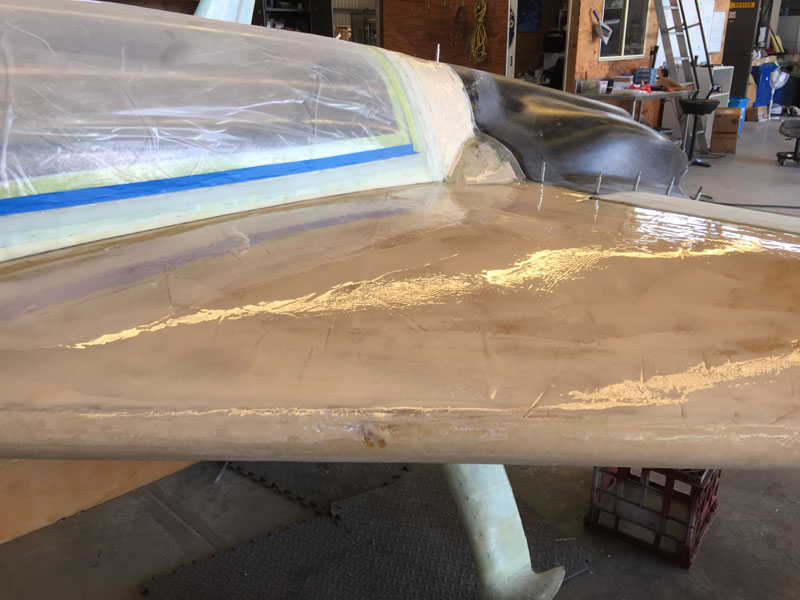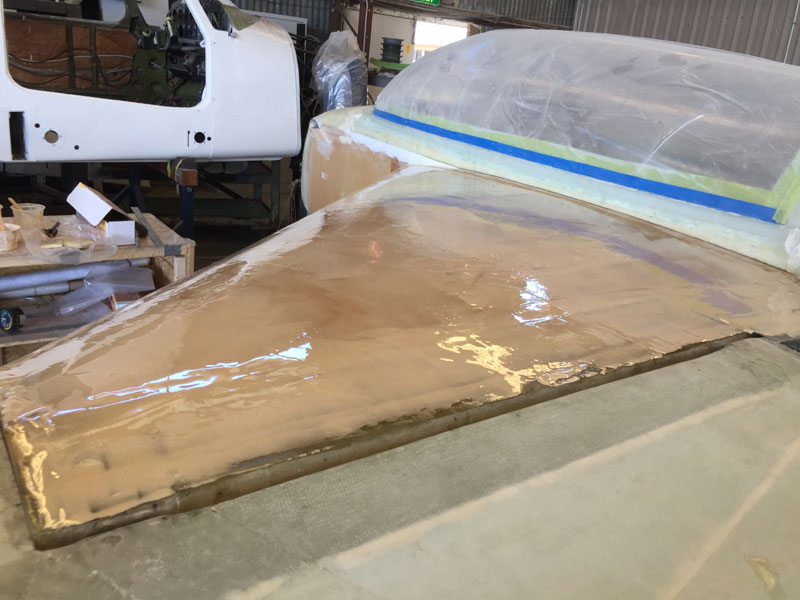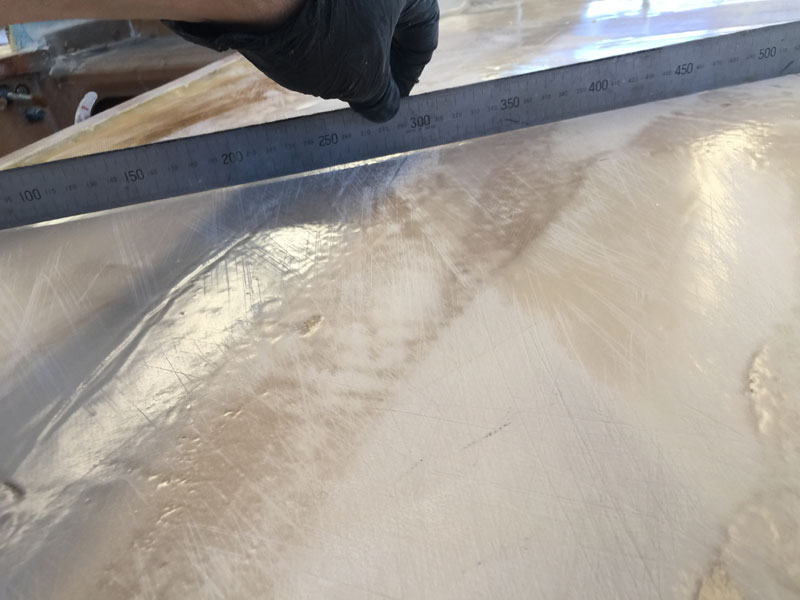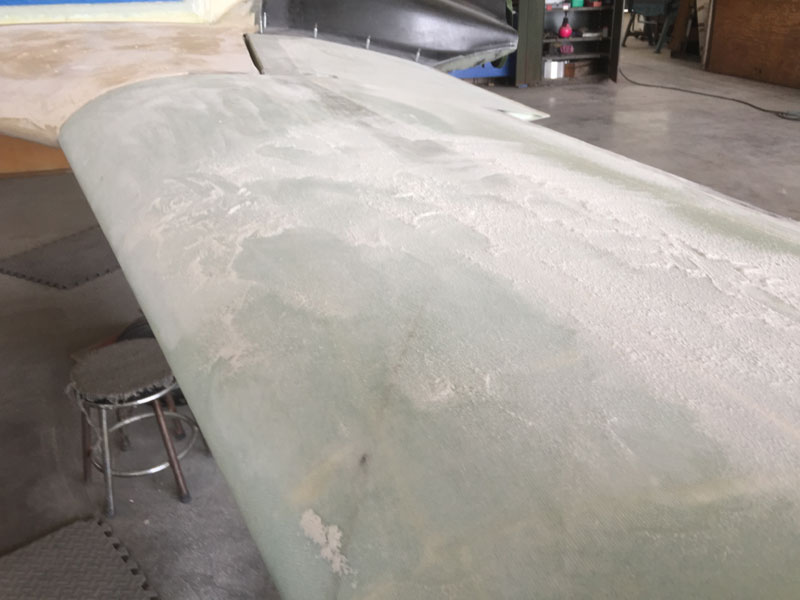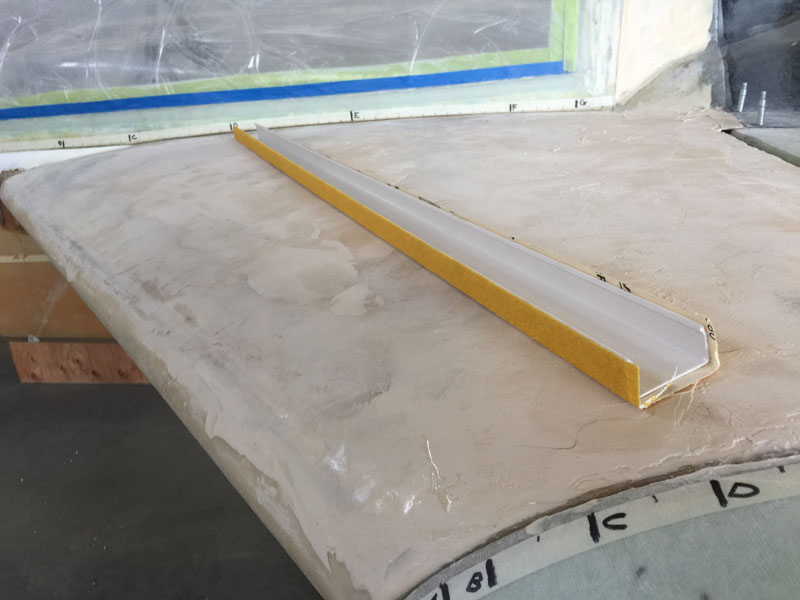| Date: 11-22-2018 | |
| Number of Hours: 30 | |
| Manual Reference: 25-6 |
I knew the stakes were going to be tough to fill to get the profile nice and clean. I had a lot of trouble with the blended airfoils that we did. If you have endured this long on a reading journey you might remember I had a herculean struggle with the tops and there were a few dips and valleys not to plan. The bottoms seemed to work out a lot better.
This is an electric drill attachment on my cordless multi-tool. The discs are a course type of Scotch-Brite material. The idea is that the low speed and this material will allow me to take off the shine from raw glass without doing too much damage to the glass fiber. I’ve already done the strakes upper and lower. In between filler cures, I am getting the top surface of the wings done.
It is many many slow hours. If I’d peel plied the lot, this step would largely be omitted. If you are building, save yourself a few weeks of being up close and personal with the whole plane, inch by inch.
Once ‘sanded’ I gave the strakes a coat of pure epoxy and then cleaned off as much as I could with paper towels. Then the first and followed by another dozen or so coats of West epoxy and 410 filler in a very thick mix.
My thinking is that a thick mix will be lighter than a runny mix after its all sanded and perfect. This seems like some time in the misty distant future.
Every angle I take has dips and faults. I’m yet to find a way to do this. A part of the answer is to just start. I know what I want in the end and have to be patient for the magic unknown that is the middle part.
I’m sanding the surface dull between filler applications where I haven’t done sanding work.
Here’s the left wing which I’m doing a bit of every day.
I’ve tried several types of sanding sticks so far. 40 grit contact glued to plastic electrical conduit is my favorite. I’ve made a bunch of things of different lengths and thicknesses.
The key to this picture is that it shows a sanding system. I had a chat with ‘Greg’ in the hangar who is a real metal working craftsman and does glass work as well. We concluded that I need a repeatable system to deal with the undulating compound curves that the blended airfoils and some imperfect work have produced.
I also thought a lot about how the particles of air are traveling and the relative wind over the strakes, assuming I’m not slipping or skidding.
I ended up with going for a sweep from parallel to the strake leading edge and back to the spar to wing join. The pic below gives the idea. I’m ignoring to some degree right next to the canopy where there is a slight rise and then at the other outboard side where we must join with the wing.
The wings themselves in contrast are really good. Very straight and consistent across the profile. They shouldn’t need much filler at all.
The sanding system in the last two pics is on the sides. I have A to G marked out to get my fan pattern and matching straight edges of length that works in the middle of the strake. I don’t need the edges to be perfect as I want to blend to the extremities but I do want to have a pretty flat ‘fan area’.
The idea is to match say the A to A line with the A length straight edge (which also does the B datum) and fill underneath it until its close. After that I’ll be ready to sand. I want a lot of filler on and then I’ll take it nearly to the glass at the high points. I hope this will be the most efficient method.
Today produced a new technique for me. After scuffing the strake I went for the biggest ugliest fill area, covered it with plastic and then used the A-A straight edge to smooth it out. It seems to have worked.
I’ll scuff it up tomorrow and do more until its looking good under the ‘edge’. I’m planning to do the entire strake this way before I go for the profile sanding. Its only that front part that seems to need heaps of filler further back is a lot better.
Hopefully its only these strakes tops that are so difficult. The rest of the plane seems pretty good, or so I keep telling myself.


